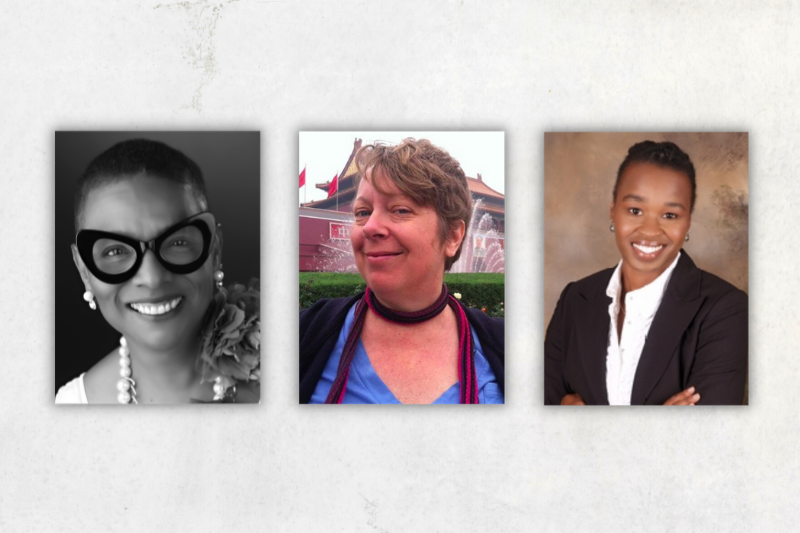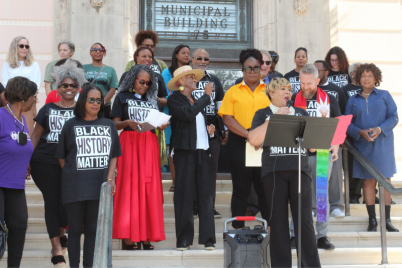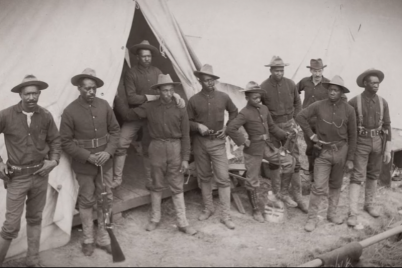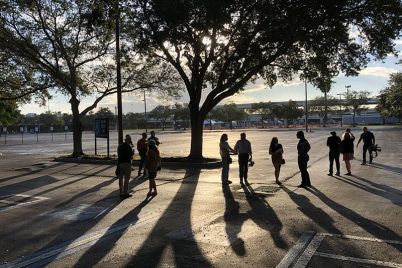Left, Gwendolyn Reese, Dr. Julie Armstrong, Dr. Antoinette Jackson.
BY FRANK DROUZAS, Staff Writer
ST. PETERSBURG — Across the nation and throughout Tampa Bay, African-American cemeteries have been lost to history, neglected, abandoned, even paved over and developed on. Even in St. Pete, where Tropicana Field has stood on long-forgotten burial grounds for years, a group of University of South Florida researchers aims to unearth their history.
This month’s Community Conversations with the African American Heritage Association (AAHA), in partnership with Tombolo Books, centered around the African American Burial Grounds and the Remembrance Project. Featured guests joining Gwendolyn Reese, president of the AAHA, in the virtual discussion included USF Professors Dr. Antoinette Jackson and Dr. Julie Armstrong.
Jackson secured a grant for the American Burial Grounds and the Remembrance Project to “address these issues of erasures of Black cemeteries in our communities,” including locations such as Zion Cemetery. This resting place, believed to be the first African-American cemetery in Tampa, was founded in 1901 but in time “erased” from maps altogether.
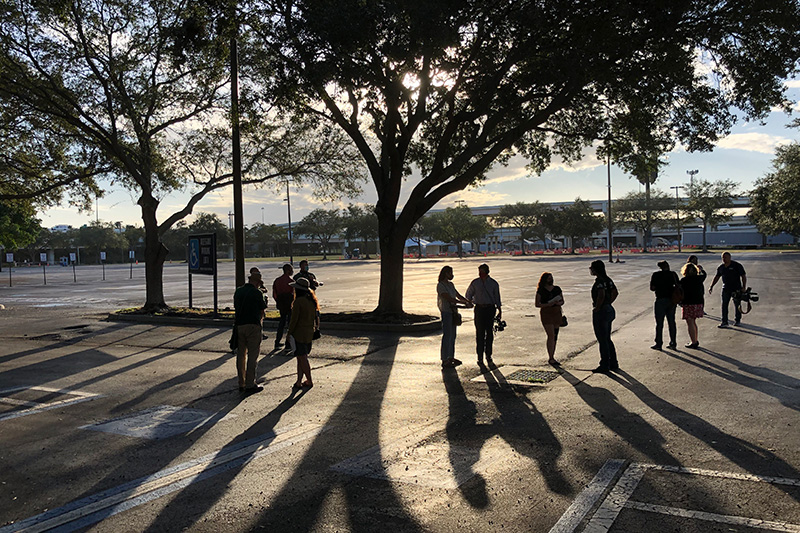
Members from the African American Burial Grounds & Remembering Project met to tour the parking lots of the Tropicana field – the Oaklawn cemetery complex site. Photo courtesy of David Shedden.
In St. Pete, Oak Lawn, Evergreen and Moffitt Cemeteries were segregated resting places where African Americans could be buried. Founded around the turn of the last century, they ultimately fell into disrepair during the 1920s and were closed. Though the official story was that the African American remains were moved to Lincoln Cemetery and the white remains were moved to Royal Palms Cemetery, some of the bodies may not have all been moved at all.
Reese pointed out that those contracted to exhume and remove the bodies believed that the official number of bodies was undercounted.
In 1976, when the city initially broke ground for the interstate, human remains were found, and the question now is if there are still human remains there. The specific location is just west of 16th Street, south of Third Avenue, and north of Fifth Avenue South. It now covers an area below an interstate overpass and Parking Lot #1 at Tropicana Field. The city recently hired a crew to employ ground-penetrating radar (GPR) to detect graves underneath, and results are pending.
“One can drive and take that spur into downtown and not really know that you’re driving over something historic and something that’s very important,” Armstrong said. With the possibility of Tropicana Field being redeveloped in the future, it is important “to do that right and remember that space right” for people in the community and those who may have had ancestors buried there.
Jackson said that we don’t need GPR survey results to tell us there were indeed cemeteries there, and that is a piece of African-American history that needs to be brought into the light.
“We want to build on that!” she said.
Added Armstrong: “What we do know is that there were cemeteries there and that they were relocated and that there are stories connected to that that are an important part of our communal story that we need to tell.”
“And then those sites need to be marked and memorialized,” Jackson said.
Many of these Black cemeteries have been omitted from any registry of historical places, she noted, adding that it “speaks to the bigger context.” This is nothing new for Black cemeteries across the country. It is unfortunate as the churches and cemeteries are often the lifeblood of African-American communities and their families’ histories.
“The cemetery is not just a place that records the names of the people and their birthdates and their death dates,” Armstrong said. “They are also gathering spaces for funerals; they’re gathering spaces for Decoration Days and Memorial Days. They’re places where families and communities gather to tell their stories of who they are.”
When it’s relocated or paved over, it’s almost like someone is trying to erase that, she said.
Jackson and Armstrong are collecting oral history interviews from those who have a connection to the cemeteries for the USF archives. Yet, a part of this Remembrance Project’s goal is to get community input on how people would like to see these historic locations memorialized.
“Most everyone I’ve talked to wants to see some kind of memorial there,” Armstrong said. “At minimum a historical marker, but also possibly some kind of space of contemplation, of remembering, of quietness.”
Public art, perhaps in the form of an interstate mural, is another consideration. Local poets also plan to contribute their art and help memorialize these sacred sites. “If the peace of the deceased is disturbed/Can there ever really be rest for the living?” begins one spoken word poem by Walter Jennings.
Though this project is now focused on these cemeteries in St. Pete and Zion in Tampa, the members hope to expand its scope in the future and include other cemeteries.
Anyone with stories and recollections to share with this project can visit afamheritagestpete.org.
To reach Frank Drouzas, email fdrouzas@theweeklychallenger.com

